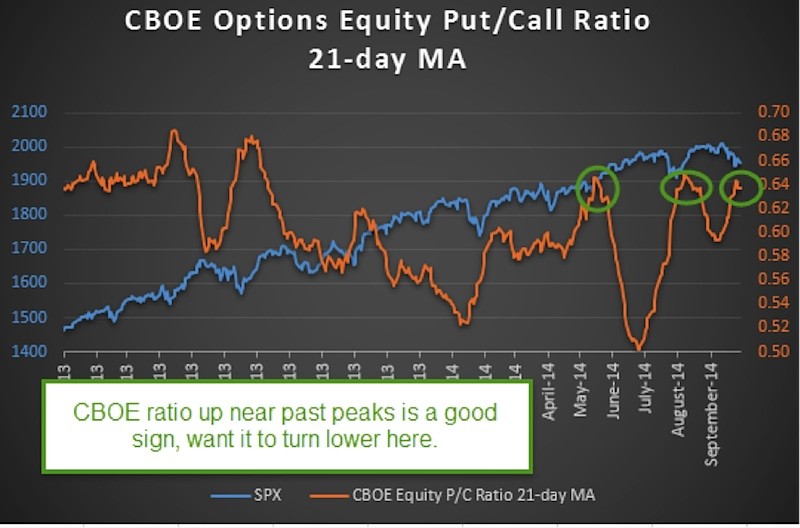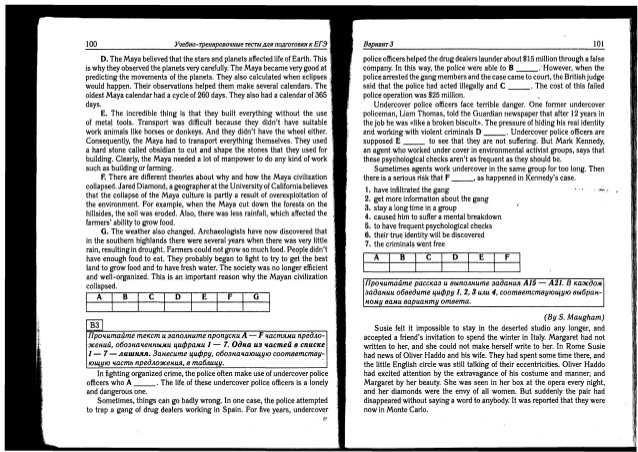The Fear And Greed Cycle Lives On David Fabian
Post on: 6 Июль, 2015 No Comment

The Fear And Greed Cycle Lives On 0 comments
Oct 17, 2014 4:15 PM | about stocks: SPY
The last few years in the market have been an interesting experiment in psychological conditioning and overall complacency. Despite calls for a correction by mainstream experts for some time, prior to September, the markets have largely shrugged off any bad news. In fact, bad news was seen as a positive sign that quantitative easing efforts would continue to prop up the markets and overall economy.
Investors have been conditioned to buy every 3-4% dip in stocks for fear of missing out on the next 8% spike higher. Then we lost that line in the sand this month and subsequently saw multiple days of extreme selling. As a result, the confidence in stocks born out of greed has been quickly replaced with fear.
To illustrate that point, CNN Greed & Fear Index is pegged at 2 (read: extreme fear) on a scale of 0-100. It actually hit zero not more than a day or two ago as we saw equity selling spike volatility index futures and a host of other fear gauges.
You can point to any number of items that the mainstream media is whipping up into a frenzy — Ebola, end of quantitative easing, commodity prices falling, European woes. The list goes on and on.
However, it’s important to remember that their job isn’t to keep you calm. In fact the opposite is true. The more scared you are, the more you will consume their content. That ultimately leads to better ratings, higher advertising dollars, and a successful outcome for their stakeholders.
The bears are out in force on Wall Street as well. Prognosticating that the end is near and you should be heading for the hills rather than making calm and rational changes to your portfolio in the face of a relatively minor speed bump so far. Despite their insistence on a tragic end to this story, we really haven’t seen a meaningful level of economic slowdown from recent data releases, especially those in the labor and housing markets.
To date, the SPDR S&P 500 ETF (NYSEARCA:SPY ) has lost 7.19% on a closing basis from high to low. We are actually within spitting distance of this widely followed large-cap index giving up all its gains for the year.
A 7% decline is one that equity holders should be accustomed to by now. Corrections are always expected, but when they arrive they never feel good, and they always feel like they could be the beginning of another bear market.
So how do you fight the natural urge to let fear dictate your portfolio management decisions?
The first step is making sure you have a process in place to navigate through these volatile periods. At our firm, that includes a multi-asset approach using stocks, bonds, and cash to lower the price fluctuations of the portfolio. A balanced methodology ensures that you don’t get overweight in an area of the market that is susceptible to high levels of risk.
If you feel yourself growing anxious during this time, it is likely because you have over extended your risk profile to an area that is proving uncomfortable. You may want to consider making subtle adjustments at opportunistic price points to bring your asset allocation back in line to manageable volatility bands.
In addition, watching every little tick of the market has a tendency to drive you crazy. If you find yourself glued to the TV or computer screen, it may be time to take a step back and evaluate your priorities on a macro level. Stress won’t help you make level-headed decisions that drive successful long-term results.

If you have been underweight stocks during this most recent uptrend, the resulting sell off should be looked at as an opportunity to put money to work at more advantageous prices. This is particularly true if you have been maintaining a watch list of favored stocks. commodities, or ETFs that you want to get exposure to. A methodical and unbiased analysis of your portfolio weaknesses will allow you to emerge from this dip stronger than when it began.
Not everyone has the same needs during a downswing in the markets. For some, risk management is about implementing stop losses and controlling downside risk. For others, it’s about making subtle adjustments to their asset allocation in response to changing conditions or volatility.
The overriding theme is to have a plan and make rational changes to your portfolio based on your individual needs rather than some pundits’ guess.
Disclosure: The author has no positions in any stocks mentioned, and no plans to initiate any positions within the next 72 hours.
The author wrote this article themselves, and it expresses their own opinions. The author is not receiving compensation for it. The author has no business relationship with any company whose stock is mentioned in this article.
Additional disclosure: David Fabian, FMD Capital Management, and/or clients may hold positions in the ETFs and mutual funds mentioned above. The commentary does not constitute individualized investment advice. The opinions offered herein are not personalized recommendations to buy, sell, or hold securities.
Instablogs are blogs which are instantly set up and networked within the Seeking Alpha community. Instablog posts are not selected, edited or screened by Seeking Alpha editors, in contrast to contributors’ articles.














